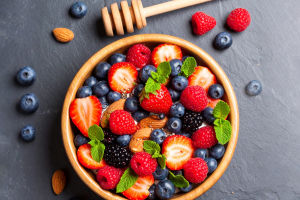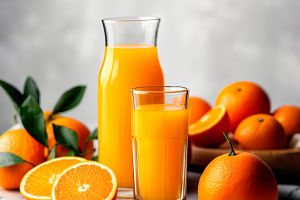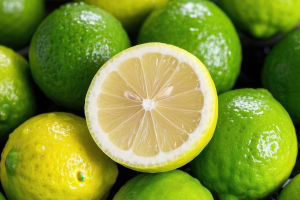You come home with a beautiful bunch of bananas, a carton of berries, or a perfectly ripe mango.
A few days later? Brown spots. Mushy texture. That sour smell.
Sound familiar?
You didn't do anything wrong. But you might've missed a few key steps—ones that could've added days, even a week, to your fruit's life.
The truth is, how you pick and store fruit matters more than you think. And with a few smart choices, you can stop waste, save money, and enjoy peak flavor longer.
Let's break down the real-world tricks that food experts and grocery pros use—no special tools needed.
How to Pick the Right Fruit—Every Time
Choosing good fruit isn't guesswork. It's about using your senses—sight, touch, and smell.
Here's how to do it right for common types:
Bananas
• Look for bright yellow with tiny brown speckles (sugar spots)—they mean sweetness.
• Avoid green tips if you want to eat them soon; green means they need more time.
• No black patches or soft stems—those are signs of overripeness.
Berries (strawberries, blueberries, raspberries)
• Check the bottom of the container. No juice stains or mold.
• Berries should be firm, plump, and deeply colored.
• Smell them lightly—fresh berries have a sweet, grassy scent. If they smell fermented, skip them.
Mangoes
• Don't judge by color—some mangoes stay green even when ripe.
• Gently press near the stem. It should give slightly, like a peach.
• A sweet, fruity smell at the stem = ready to eat.
Apples & Pears
• Apples should feel heavy for their size—light ones may be dry inside.
• Pears should be firm at the neck. Ripen at room temperature until the neck yields.
Where to Store What—And Why It Matters
This is where most people go wrong. Not all fruit belongs in the fridge.
Here's the simple rule:
Fruit that continues to ripen after picking = counter first, then fridge.
Fruit that doesn't ripen after harvest = fridge right away.
Counter (until ripe), then fridge:
• Avocados
• Bananas
• Mangoes
• Peaches
• Pears
• Plums
Fridge immediately:
• Berries
• Grapes
• Cherries
• Apples (if already ripe)
Special cases:
• Bananas: Once ripe, you can refrigerate them. The peel will turn black, but the inside stays fresh longer.
• Berries: Never wash until ready to eat. Moisture speeds up mold.
• Pineapple: Store whole on the counter for 1–2 days, then refrigerate. Cut pineapple goes in a sealed container.
Pro Tips to Extend Freshness
Want to stretch your fruit's life even more? Try these tested methods:
1. Use paper towels in berry containers
Line the bottom (and top, if resealing) with a dry paper towel. It absorbs excess moisture—biggest cause of mold.
2. Keep apples away from other produce
Apples release ethylene gas, which speeds up ripening. Store them in a separate drawer or bowl.
3. Store stone fruit stem-side down
Peaches, plums, and nectarines bruise easily. Resting on the stem helps protect the soft bottom.
4. Freeze ripe fruit
Overripe bananas or berries? Peel, slice, and freeze on a tray, then transfer to a bag. Perfect for smoothies or baking.
5. Revive limp fruit
Slightly soft strawberries or grapes? Soak in ice water for 15–20 minutes. They'll plump back up.
Why This Small Effort Makes a Big Difference
The average household throws away about 25% of the fruit they buy—not because it's bad, but because it wasn't stored right.
And when fruit lasts longer, you're more likely to eat it—making healthy eating easier, not harder.
Next time you're holding a piece of fruit, pause for just a second.
Ask: Is it ready? Where should it live tonight?
Those two questions—plus a few simple habits—can change how much you enjoy your fruit, and how little you waste.
Because freshness isn't luck.
It's a choice—one you can make every time you bring fruit home.
Which fruit will you store differently this week? Maybe the one that usually goes bad too fast finally gets its second chance.


